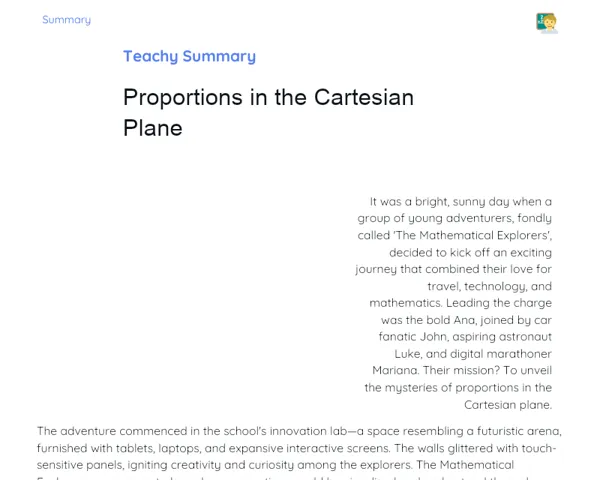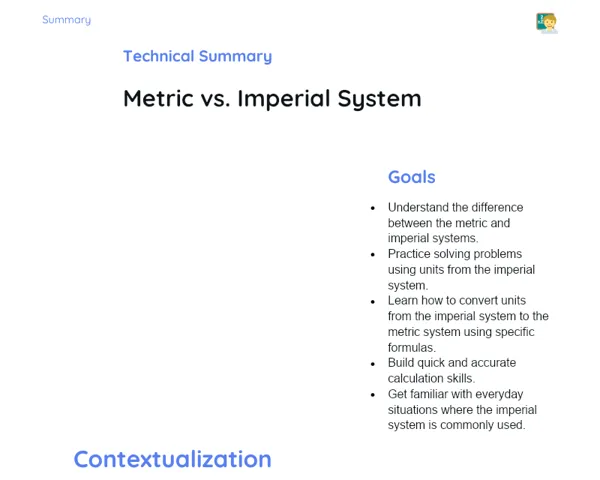Objectives
1. Differentiate and accurately calculate the arithmetic and geometric means, understanding their practical applications.
2. Develop mathematical logical reasoning skills and apply these concepts in real-life situations, such as resource management, financial planning, and forecasting.
Contextualization
Did you know that arithmetic and geometric means find their utility across various fields, from economics to engineering? For example, the geometric mean is frequently used to estimate growth rates, while the arithmetic mean is essential for analysing everyday data, like average marks in school. Grasping these concepts not only aids in solving mathematical problems but also helps in making well-informed decisions in numerous practical scenarios.
Important Topics
Arithmetic Mean
The arithmetic mean is the most common type of average we calculate. It's used to find an average value from a list of numbers by adding them all together and dividing by the count of numbers in the list. For example, the arithmetic mean of 2, 4, and 6 is (2 + 4 + 6) ÷ 3 = 4. This mean is crucial in everyday contexts, such as calculating average scores, prices, or temperatures.
-
Add all the values and divide by the total number of values.
-
Used to calculate averages of values that can fluctuate linearly.
-
Important for data management and basic statistical techniques.
Geometric Mean
The geometric mean is determined by multiplying all the numbers together and then taking the nth root of that product, where n is the total count of values. This type of mean is particularly helpful in scenarios involving exponential growth, such as compound interest rates or assessing investments. For instance, the geometric mean of 2, 4, and 8 is the cube root of (2 x 4 x 8) = 4.
-
Multiply all values and take the nth root of the product.
-
Used to calculate growth rates that are not linear.
-
Essential in finance and science for growth assessments.
Differences Between Arithmetic and Geometric Means
Arithmetic and geometric means differ in how they accommodate extreme values. The arithmetic mean can be skewed by large values, while the geometric mean is less impacted by them, making it a better choice for datasets with significant variations. Understanding these differences empowers students to select the most suitable mean for various situations, enhancing their decision-making abilities.
-
The arithmetic mean is more influenced by extreme values compared to the geometric mean.
-
The geometric mean is preferred in scenarios involving exponential growth.
-
Choosing the right mean is vital for accurate analysis.
Key Terms
-
Arithmetic Mean: A measure of central tendency that computes the average value of a set of numbers by dividing the total sum by the count of elements.
-
Geometric Mean: An average derived by multiplying all elements of a set and taking the nth root of that product, where n is the total number of elements.
-
Nth Root: An operation that, when applied to a number, yields a value that, raised to the power of n, returns the original number.
-
Extreme Value: A number in a data set that is significantly higher or lower than others, which can skew the arithmetic mean.
For Reflection
-
How can the choice between arithmetic and geometric mean influence the conclusions drawn in a statistical study?
-
Why is it necessary to consider extreme values when calculating means?
-
In what ways can understanding means assist in making personal financial decisions?
Important Conclusions
-
Today, we explored the intriguing arithmetic and geometric means and how they find applications in real-life situations, from simple household calculations to complex analyses in business and science.
-
We noted that the arithmetic mean is sensitive to extreme values, whereas the geometric mean offers more stability in such scenarios, which is critical for informed decision-making.
-
These concepts are not merely theoretical; they have a direct influence on our lives, aiding us in resource management, investment planning, and enhancing our comprehension of the data we encounter.
To Exercise Knowledge
- Maintain a diary of your daily expenses for a week. Calculate the arithmetic mean of total spending each day and the geometric mean for the week's overall total. Compare how each mean reflects your spending behaviour. 2. Select a set of numbers that contains an extreme value and compute both the arithmetic and geometric means. Discuss how this value affects each calculation. 3. Challenge yourself to identify everyday situations where the geometric mean may be more fitting than the arithmetic mean and vice versa.
Challenge
Design a small research project evaluating the effectiveness of two distinct study techniques for an exam. Calculate the arithmetic mean of the grades achieved by students using each method and the geometric mean of overall performance. Present your findings and discuss which method appeared to be more effective based on the calculated means.
Study Tips
-
Practice calculating means in various contexts, like games, to make learning more engaging and relatable.
-
Utilise online tools like mean calculators to validate your calculations and enhance your understanding of mean applications in different fields.
-
Share your results and challenges with classmates or teachers to gain diverse perspectives and deepen your comprehension.



